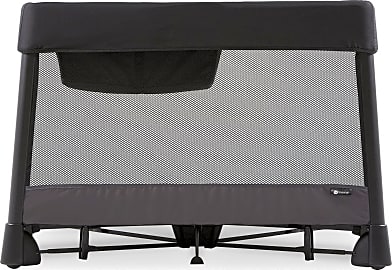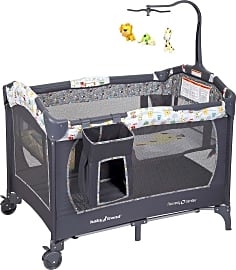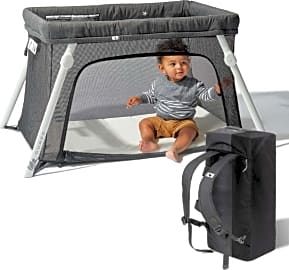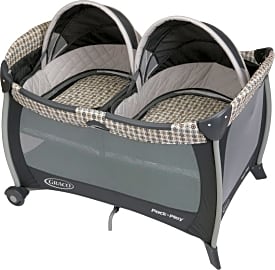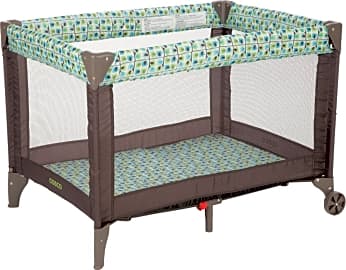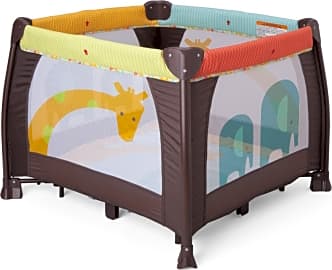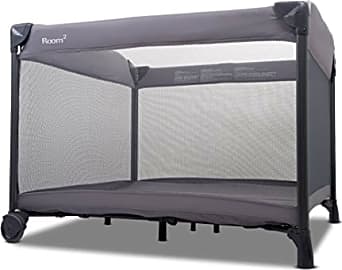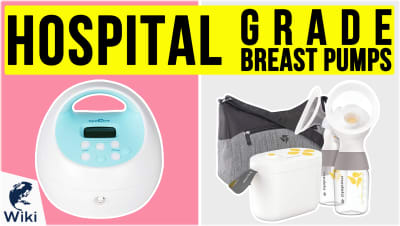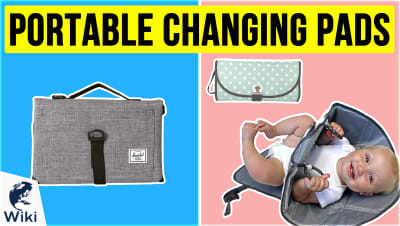The 10 Best Pack And Plays

This wiki has been updated 44 times since it was first published in April of 2015. Playpens and play yards have come a long way since we were in one. Modern pack and plays are easy to fold, and some models provide a complete nursery away from home. Check out our selection of safe, portable and feature-rich options that will give your little one a secure place to nap and have fun just about anywhere. For safety, make sure you only use the mattress that comes with the model. When users buy our independently chosen editorial selections, we may earn commissions to help fund the Wiki.
Editor's Notes
June 29, 2019:
A playpen is a practical necessity for families on the go with infants or toddlers. Designed to create a safe play and sleep space, they fold down into a compact package that fits in the trunk of a car or is easy to stow away in the closet when not in use.
You will probably want a pack-n-play that cleans easily and is quick to set up and take down, and our selections meet both requirements. You'll also want to make sure the one you choose was built after 2012. The U.S. Consumer Products Safety Commission issued new safety guidelines that year and the models built after that are more likely to meet the requirements. As a general rule, you should use only the mattress pad that comes with the playpen; adding additional padding can present a suffocation hazard.
In this update, we re-evaluated all of our selections for value, functionality, and quality. Added the Baby Trend Nursery Center in one of the top slots because it offers some nice features for a very reasonable price.
Finding The Perfect Pack And Play
The drawback is that these units are less suitable for sleeping, usually the primary purpose of a pack and play.
It's important to know the basics about pack and plays before you start to consider the specifics, so let's take a moment to cover the fundamentals. A pack and play is, as the name suggests, a unit that is relatively easy to fold up and pack away for storage or for travel; they are not necessarily designed for daily, long term use, even though many are durable enough for such. The word "play" is a bit less accurate, however. Most pack and plays are rather small for any meaningful play, quickly becoming cluttered if toys, stuffed animals, or other items are introduced. And in fact, as the American Academy of Pediatrics recommends a child should have with nothing in their crib for the first 12 months of life at least, introducing items into a pack and play can even be hazardous.
It is more accurate to think of a pack and play as a portable and temporary crib than as a latter day playpen. There are a few exceptions to this rule: certain pack and plays are large enough to accommodate play, notably a few that buck the standard rectangular shape in favor of a square or even a hexagonal design. The drawback is that these units are less suitable for sleeping, usually the primary purpose of a pack and play.
Ultimately, you should choose a pack and play based on how well you think it will allow your child to sleep, not based on its potential for play. If you have a newborn, consider a pack and play that has a bassinet feature. This precludes the need for an additional purchase of a bassinet that is often used for only a few months. The larger bottom area of the pack and play can provide a large enough sleeping area for most children up to and even well past their second birthday, so if you do want to use a pack and play in lieu of a crib, consider investing in a unit that is rugged and durable instead of opting for one that is lighter weight.
The reason many people consider a smaller, lighter pack and play is that they need to provide a safe spot for a child only on limited occasions. A pack and play is a great choice for the home of the grandparent or other relative who expects to see a youngster too infrequently to merit the purchase of an actual crib but often enough that a dedicated safe spot is needed. In these circumstances, if a pack and play is to be used only when a child is actually sleeping, there's no reason not to opt for one of the more affordable options. Even though some of the units at the lower price points can occasionally be frustrating to set up or take down, the fact that their use is infrequent should mitigate this annoyance.
Making The Most Of Your Pack And Play
At first, most pack and plays seem rather confusing and even a bit daunting for the parent or caregiver who has to set them up (or take them down). The first few times you try out a pack and play should occur well before you ever actually need the unit to provide a safe spot for a child. Practice "deploying" and breaking down your pack and play a few times and you will likely get the hang of it. People can set up most pack and plays in seconds once they learn the proper method.
Once you know how your pack and play works, it's time to make sure you have all the right accessories and that you know a few "hacks." At the bare minimum, you should own two sets of sheets for a pack and play. That way, when one is (almost invariably) soiled, you can swap out a clean sheet and keep your child comfortable while laundering the sullied linens. In a pinch, however you can wrap a twin sheet around a pack and play's pad, as the child's weight will hold the pad down and prevent it from coming loose. Just make sure the ends of the sheet are fully underneath the pad.
And while it is not safe to have toys inside a pack and play, you can use a mobile above the unit or attach toys, stuffed animals, or other trinkets to the exterior of the pack and play provided they can't be pulled inside. These can help amuse and soothe a child as he or she rests.
A Brief History Of The Pack And Play
Before the year 1987, you would not have heard the term "pack and play." That's because that is the year in which the baby and child product company Graco first released a unit called a pack and play. Soon enough, the name was adopted by brands all over the globe.
Thus the pack and play is designed more for sleep than for confined play, though it can serve both purposes as needed.
Today, it is in fact much more common to hear mention of a pack and play than of a playpen, even though playpens have been around for generations, with their first noted mention in a dictionary dating from 1902 and with patents for various playpen refinements common throughout the 20th Century.
Playpens were lauded throughout much of the 1900s as a safe place for a child to be placed while the parent worked or took care of other duties, but by the 1970s, the approach to parenting had shifted sufficiently that these units were seen more as confining than welcoming.
Thus the pack and play is designed more for sleep than for confined play, though it can serve both purposes as needed.


